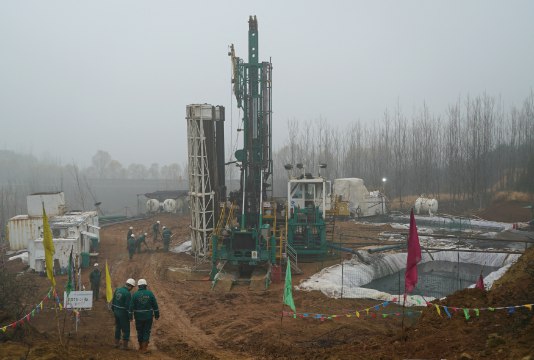China unveils methane emission control plan

China unveils methane emission control plan
China has unveiled a broad plan to control its methane emissions, though the world’s biggest emitter of the polluting gases is offering no specific target for reducing them.
Beijing and Washington held climate talks this weekend in California, raising new hopes for headway at the COP28 summit in Dubai.
China is the world’s largest emitter of greenhouse gases and the biggest producer of methane, mainly from its coal mining industry.
It has promised action on methane but not signed a global pledge backed by the United States and European Union on slashing the gas, which has a shorter lifespan in the atmosphere than carbon dioxide but is far more potent.
The International Energy Agency last month stated that “immediate reductions” in methane emissions were needed to limit climate warming.
In a broad plan released by its Ministry of Ecology and Environment late Tuesday, Beijing said it would aim to strengthen “emission monitoring, accounting, reporting and verification systems” and offered broad steps to improve “methane emission control in the energy sector”.
However, it did not offer a specific target for reducing its emissions.
The plan includes steps to capture and reuse methane emissions, promising to recycle up to six billion cubic meters of the gas released by coal mines by 2025.
China’s energy sector emitted 38.6 billion cubic meters (25,372 kilotons) of methane in 2022, with its total emissions accounting for 15.6 percent of the global share, according to the IEA’s Global Methane Tracker.
Beijing also pledged to reduce its use of gas flaring — a key source of methane emissions — in energy extraction, as well as taking steps to reduce leaks.
It also offered steps to repurpose more than 80 percent of livestock waste, another major source of methane emission, by 2025.
COP28 president Sultan Al Jaber, who heads UAE oil giant ADNOC, hailed the plan as a “critical step for global climate action”.
“I am delighted to see China taking an important role in helping to reduce methane emissions,” he said.
But Li Shuo, incoming director of the China Climate Hub, wrote that while the plan offered “roadmaps for key sectors”, details were notably lacking.
“The lack of numerical targets underlines further work needed to enhance baseline data,” he said in a post on social media platform X, formerly Twitter.